The Gang Rape Epidemic in India
The subjects of sex and property have nourished the Indian film industry for years. The female body has always been an object of gaze. Barring few notable exceptions, the stories are about a man in whose world a woman is but an accessory. The hero fights the battle and the heroine nurses the wound; the hero kills the villain and his woman submits her body and soul to him. They become block-busters, those harmless pieces of entertainment. “Let us watch it. So what if it is rubbish?” If this be the motto of our people, then I dare say: we are doomed. This sexist culture is reinforced by the Hollywood movies where the modern man finally finds his refuge, his model, his own image. Hollywood’s ability to detoxify every human experience is what appeals to us. The political is made apolitical and the anti-political, the dissenting, is turned into an object of ridicule. In our haste, we ignore the painful and honest voices. Our age admires the human-machine Arnold: his brick-like body, his machismo.
In India during 2011, the total number of reported rapes was 24,206. One can fairly guess that, given the harassment of women who raise their voices, the real number of rapes was significantly higher. A month ago, Digvijay Singh, a senior leader of the Congress Party made a rude remark about a woman politician, and the entire country had a good time laughing at his sexist jibe. It is not uncommon in India for women to get raped even inside police stations; the army too has to its credit a large number of cases where women were raped by its personnel and then murdered.
A year and half ago, I visited Jawaharlal Nehru University (JNU) in Delhi on the surcharged day when India was playing a cricket match against its arch rival Pakistan. JNU is the bastion of the left, with excellent records in academics and activism. The campus was in a “nationalistic” mood (that is: an anti-Pakistani, anti-enemy mood). During the match, when an Indian batsman would score a boundary, the pro-India group would hoot, and when the Indian batsman would get out, the pro-Pakistan group would shout and hoot. This soon led to an ugly brawl during which the female students were singled out and targeted: in other words subjected to double violence for (a) being members of the “pro-Pakistani” group and (b) being women. She must know how to behave. “She is the enemy’s woman”, hence…. But it is heartening that JNU is making gender studies compulsory for everyone who is enrolled in the University. A month ago, a young woman at JNU was shot with a pistol in a classroom. She thankfully survived, but the young man who shot her died after he consumed pesticide.
The media is in a state of mourning today, but yesterday, Amitabh Bachan, an Indian actor of distinction was asked by a journalist: “Why don’t you play a lead role, a role of a protagonist?” Would this journalist ever bother to ask this same question to a woman actor of the same age? No, because she would be an “old woman.” Female writers of hallmark and distinction are asked “Why haven’t you married?” Such nonsense is uttered, and people read it with delight. Sexism as an industry survives in India with much fanfare and approval. Sexism is part of the mass entertainment on which this country survives.
Under the current circumstances, with another Indian gang rape being publicized world wide, the media has already started “Live self-defense training programs” that raise some ugly and profound questions about disciplining the body. If the media is so genuinely concerned, it must immediately start live or recorded classes on women’s studies. But such a thing will never happen. It is at best a quixotic dream. The media’s recently found love for fascism is sufficient proof of its concern toward the plight of working-class women. The “country” means: a tiny elite of the super-rich. Aided by the US and European bourgeoisie, a new aesthetic of culture is being circulated. Women are its first victims. Imperialism never respects. It is the sadistic pleasure of destruction that it thrives on. Its connecting motor is hatred of the other: blind and brute hatred.
Rape in India is becoming an act of collective spectacle. After each rape, the politicians from the right use it as an occasion to teach women which values are Indian and which ones are not. According to Raj Thakrey, the recent incident would not have happened if the inept and corrupt Chief Minister and his Deputy had not been in office. In other words: “Get me elected, and I will ensure that such incidents do not happen.” For many Muslim fanatics, a rape becomes an occasion to “keep our women within bounds.” The youth too respond: they walk with candles under the glare of media cameras, upload their photos on FaceBook and then compete for “likes.” They gleefully participate, with hearts beating like water pumps, in the great debates organized by serious-looking journalists. And the media sincerely cries over it, weeps, confesses its helplessness. On other occasions it takes up the issue of a trial and condemns the rapists after “shifting through evidence with the seriousness of a Learned Judge.”
Women are gang raped by the army and police in “disturbed” areas. But these incidents are never even discussed by our elite English-speaking journalists. They are mostly busy discussing castration and the death penalty. Given the fact that the vast majority have already succumbed to the lure of capital and its culture, it seems that those of us who live on the fringe are being asked to get used to the rapes and then to the banal televised outbursts.
Editor’s Notes: All photographs by Ramesh Lalwani.
Related Articles


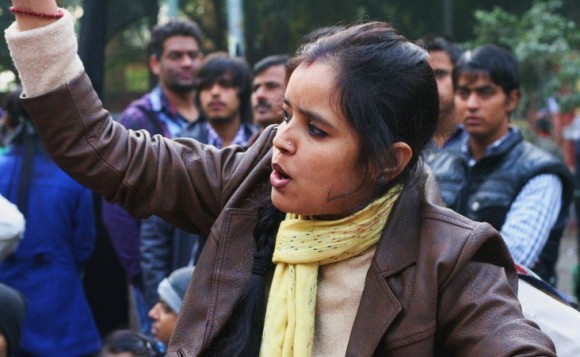
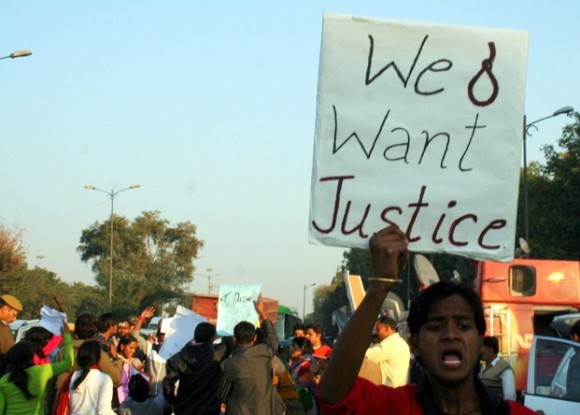
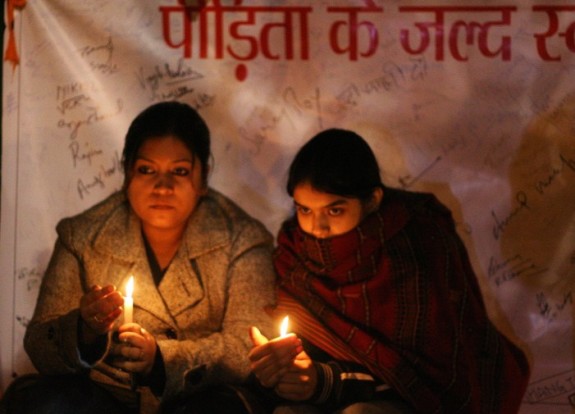
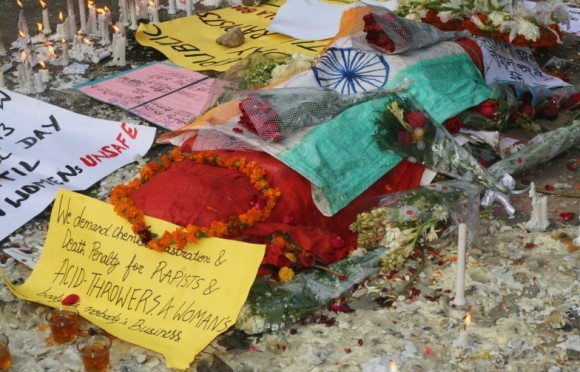
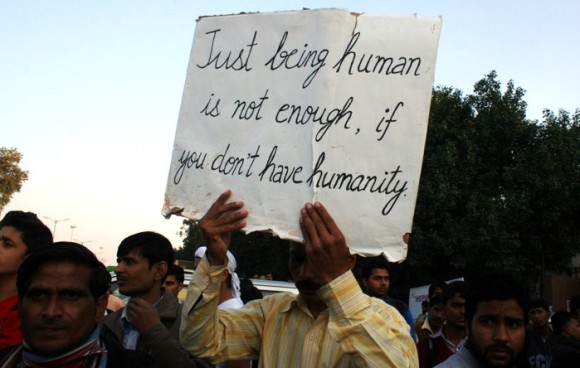
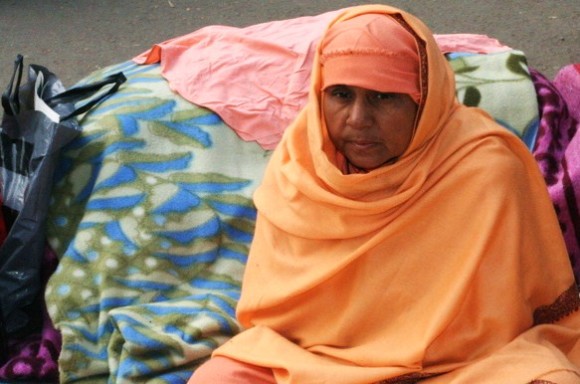
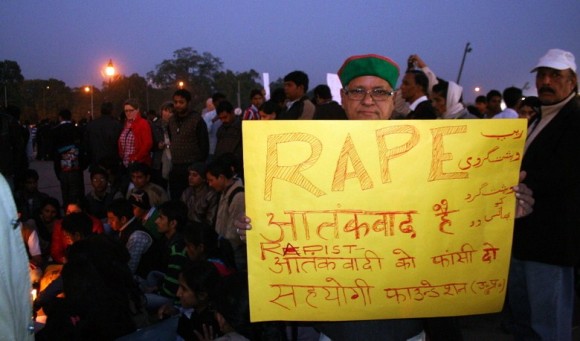
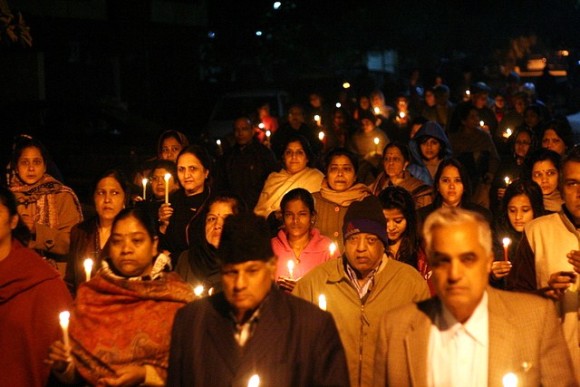











One Response to The Gang Rape Epidemic in India
You must be logged in to post a comment Login